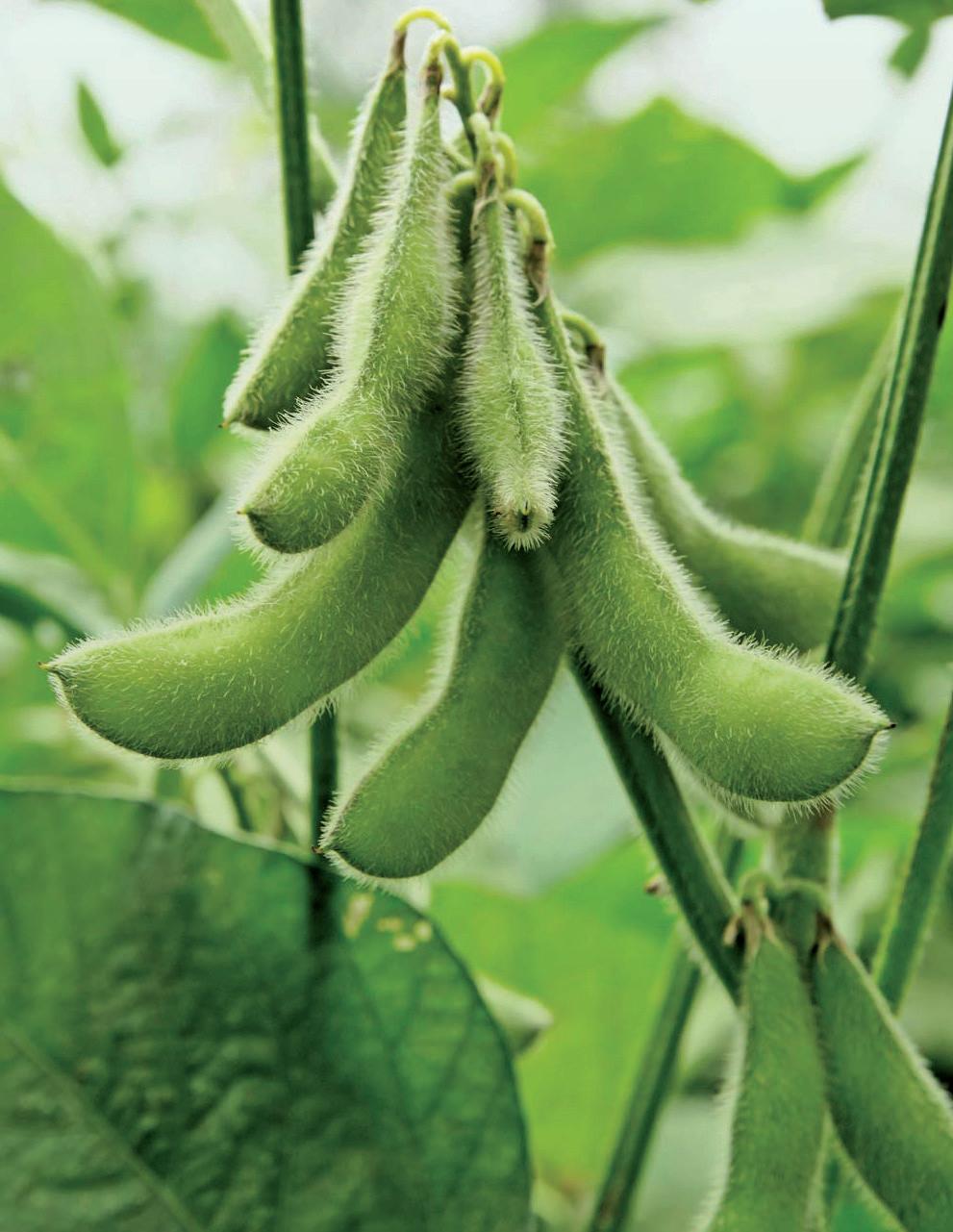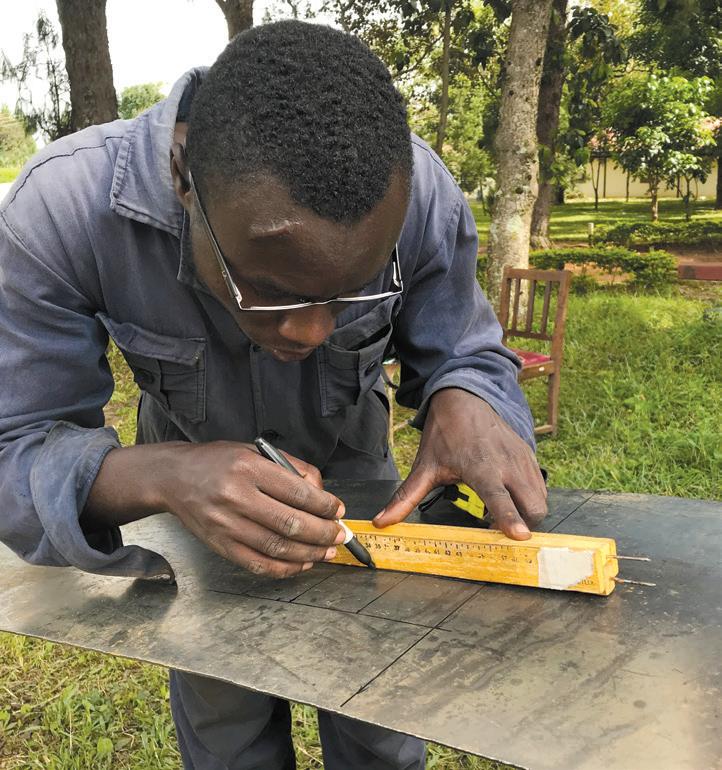
3 minute read
The SIL Multi-Crop Thresher
Jeffrey Appiagyei is the co-founder of SAYeTECH, SIL’s thresher commercialization partner in West Africa, and a lead designer and trainer for the lab’s thresher fabrication workshops held across Africa.
Proud thresher trainees in Ethiopia (below), a completed SIL multi-crop thresher (top right), and fabricator Florence Kabuka learning to operate a plasma cutter from SIL trainer Hakeem Karim in Zambia (bottom right). Starting with just 12 fabricators from Ghana in 2016, SIL has now trained over 200 fabricators across 10 countries to build, service and maintain threshers that can handle common bean, cowpea, maize, millet, rice, sorghum, and soybean. CHALLENGE: In most SSA countries, hand threshing using sticks is the most common way to thresh crops, whether on farm or in the seed sector. The high labor demands and length of time needed to manually harvest and thresh a crop leads to delayed harvest and loss from shattering, lodging, and reduced grain quality from spillage and breakage. Manual threshing is especially burdensome to women who make up much of the labor force when it comes to threshing. Threshing loss is second only to storage loss as a contributor to post-harvest losses in most crops.
Advertisement
Mechanical threshing technology is important in reducing human drudgery and work exertion, in addition to improving productivity and yields. Yet in Sub-Saharan Africa, access to crop threshers and shellers for post-harvest operations is limited, particularly for locally produced and low-cost commercial equipment. Imported threshers are often too costly and too large for small farmers, are not designed for rough field conditions, or end up in the scrap pile if repair parts cannot be located or fabricated. SOLUTION: SIL recognized the need for mechanized crop threshers to relieve the burden of stick threshing and increase productivity. Designed by a Ghanaian fabricator, the SIL multicrop thresher (MCT) has been extensively field-tested by both SIL and farmers. Interchangeable concave sieves make it usable for multiple crops including maize, soybean, rice, sorghum, millet, sunflower, barley, cowpea and common beans. The SIL MCT is fabricated locally from domestically-sourced parts and sells for $3,500-$5,000. Thresher designs are open source, providing free access to CAD plans and operator manuals. The MCT is sized and priced for purchase and use by mid-sized farmers or service providers. It can be powered with a diesel engine or through a tractor power take-off.
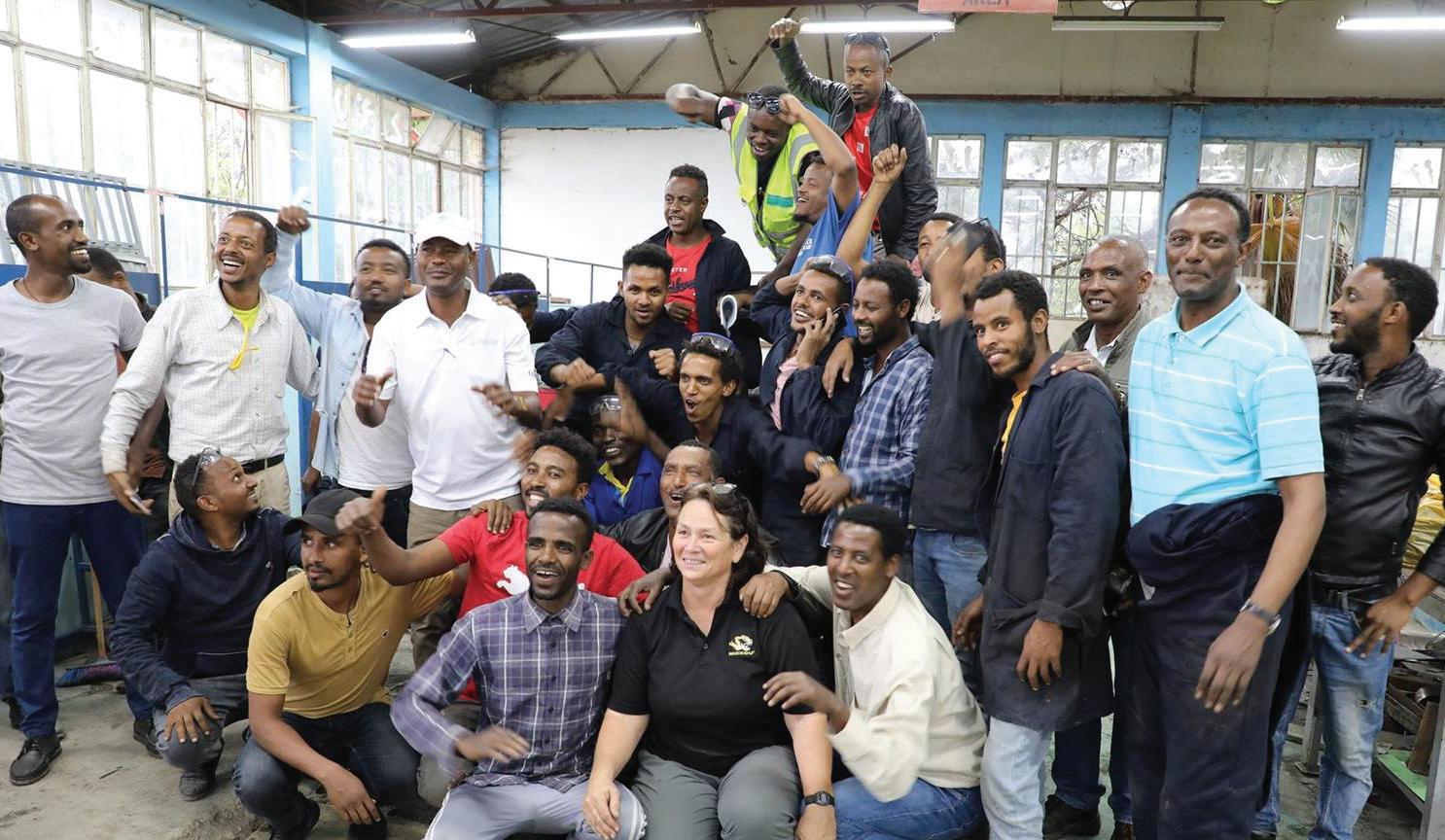
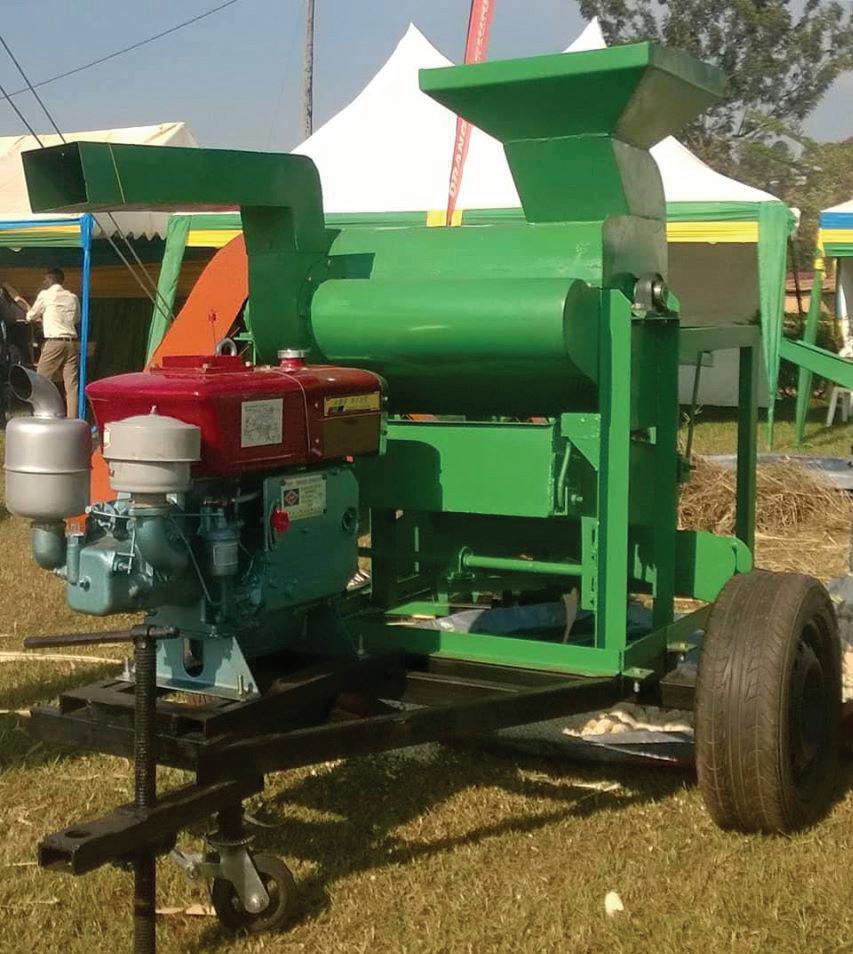
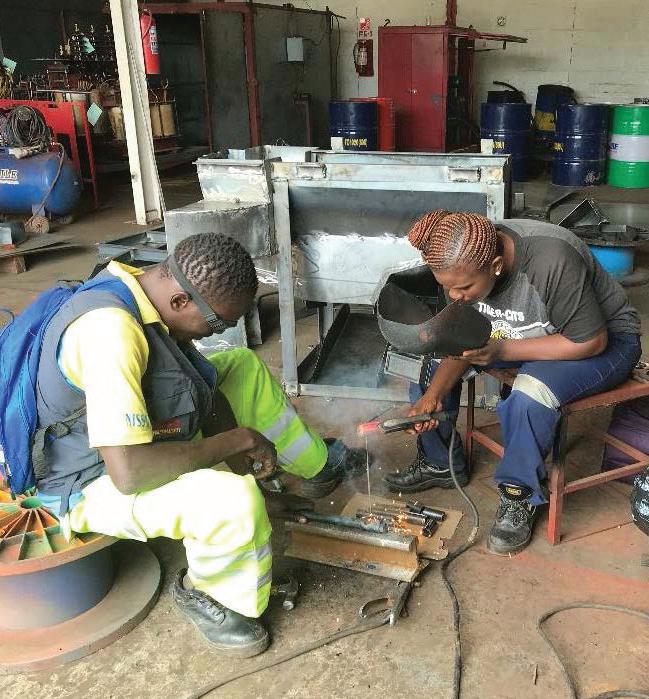
The SIL MCT is 40x faster than traditional stick beating and reduces threshing time by 80%. Speeding up the time needed to thresh grains protects crops from bush fires, gets crops to market faster, and provides income for farmers in a timelier fashion. Mechanical threshing also reduces contamination from stones and dirt introduced during hand threshing, thus producing grain with higher market value.
SIL, partnering with local firms, promotes in-country production of the thresher, local economic development, and youth employment. To-date, SIL has trained over 200 fabricators on how to manufacture the multi-crop thresher across 10 African countries including Burundi, Ghana, Ethiopia, Kenya, Malawi, Rwanda, Tanzania, Uganda, Zimbabwe, and Zambia. SIL trainees have gone to market with over 280 threshers across Africa, and 70 entrepreneurs are now commercially operating the SIL MCT.
SIL trained FirstWave Group in Zambia, a verticallyintegrated aquaculture company, to produce a suite of threshers in 2020. The company needed a mechanized thresher solution to improve the timeliness and quality of grain procured form Zambian farmers for FirstWave’s aquaculture feed production. KEY IMPACTS

MCT 1.0 • The prototype and the first SIL multi-crop thresher design.
MCT 2.0 • Chassis improved for easier towing • Engine and body size increased for greater threshing capacity • Feeding chute redesigned for greater safety • Suction increased for better cleaning
MCT 2.1 • Secondary suction fan added for improved cleaning • Improved safety shields
MCT 2.2 (not pictured) • Straw puller added to feeding chute to pull in soybean plants faster
MCT 2.3 • Chassis improved for higher speed road towing • Improved air control on secondary suction fan • Improved operator stand • Chaff flow direction changed to reduce dust
MCT 1.0 2016-2017 MCT 2.0 2017-2018
MCT 2.1 March 2019 MCT 2.3






